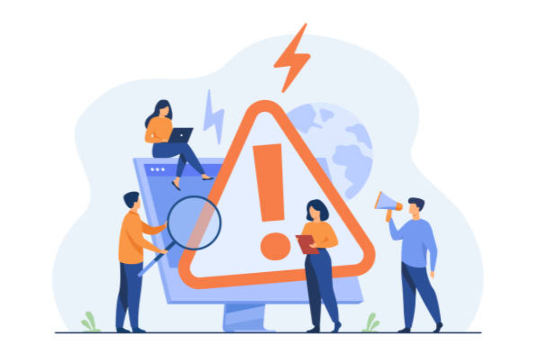Adverse media screening, also called negative news screening, allows businesses in finance and compliance to find any negative or suspicious stories about individuals or organizations. You should look for details that people can access and suggest the person broke laws, rules or acted in a misleading way. Looking at different sources of news, blogs and social networks allows companies to detect potential risks ahead of partnering with others.
Why You Should Include Adverse Media Screening
Bad news travels rapidly across the internet these days. Just one scandal connected to someone you do business with could ruin your reputation, cost you money and bring you legal trouble. For this reason, adverse media screening is very important. It allows business entities to understand risks and respond quickly to prevent them from collaborating with dangerous groups or people. Most importantly, using MTD bolsters compliance with laws such as AML and KYC which contact for complete due diligence.
Kinds and Sources of Negative News
Adverse media may be expressed in various ways. It could be a media article talking about someone taking part in fraud or a web post highlighting violations against workers by a company. We can find this information through traditional news sources, internet media, government files and postings on social media. All the different pieces of information help to illustrate the risks linked to a subject.
A comparison of manual and automated adverse media screening
You can manually go through adverse media or use automated tools to do it. Handpicking employees can be the right option for firms with just a few clients. But, it takes a lot of time and can result in mistakes caused by people. Alternatively, automated adverse media screening software goes through thousands of sources in real time to make sure all information is caught. They rely on AI and machine learning to remove unnecessary details and recognize risks, so the process is quicker, more effective and allows for growth.
What Does Adverse Media Screening Software Do?
A good adverse media screening tool does not limit itself to reading just the headline of articles. It fits into the way you currently handle compliance, giving you immediate alerts, custom risk rules and complete reports. They ensure compliance teams quickly notice risks and manage them without getting overwhelmed by information. Typical features are the ability to use several languages, customize the search process and view risk information at a glance.
Firms providing services for Adverse Media Screening
You’ll find many companies that offer adverse media screening. Providers are not the same in how well their maps are covered, how correct they are, how users can interact with them and how much they charge. It’s important to check how regularly the data is updated, if the service provides global news and how easily you can integrate it with your systems. Choose a vendor that relies on AI to reduce false positive results and enables you to use the solution for a period before purchasing.
Knowing How Adverse Media Databases are Used
At the center of every screening software is the adverse media database. This is where the tool finds the clues to spot red flags. High-quality databases include both sanction lists which are structured and news articles or online posts that are not. The ideal databases operate worldwide, are regularly updated and make use of natural language processing to draw useful data from complex information.
Regular Obstacles when Performing Adverse Media Screening
Even so, there are some difficulties with adverse media screening. A main problem is that innocent remarks can incorrectly set off warnings. The lack of smart filtering often leads to wasting both time and resources. Having to process too much information is an issue as well. Receiving too many unimportant alerts can make you tired of looking at them. When moving data internationally, special attention needs to be given to legal and privacy concerns. Be sure your system is in line with regulations such as the GDPR or CCPA.
Using Adverse Media Screening in an Effective Way
Integrating it with your existing work processes is the best way to use adverse media screening. You should not view compliance as something that only happens once. You need to keep an eye on your high-risk clients and business partners regularly. Make sure your team learns how to review screening results and how to escalate their findings when needed. Also, regularly update both your software and databases.
Things to Consider When Picking Screening Tools
Make sure the adverse media screening tools you evaluate have high accuracy, are able to work fast, grow with your business and are easy to use. Risks are identified and noisy data is weeded out more effectively when AI and machine learning are used. It is important that compliance officers can easily use and read the software without technical support. A business with international operations needs employees who are multilingual.
Tips for Carrying Out Adverse Media Monitoring
You should begin by finding out what your organization can handle and defining clear criteria for screening. Set up filters that work best for your industry and must follow set regulations. Set up regular checks to make sure the tool is working and follows new regulations. Help your team give input by having them identify false positives and also recommend solutions.
Negative News Screening in the Future
The best Negative news screening tools will be those that are faster, adapt to changes and more intelligent. As we have more data, it will be more important for AI to handle and explain the results. With cloud-based technology, businesses will have the ability to grow easily and stay up to date in real time. Partnering closely with wider compliance platforms can result in uniform risk management.
Conclusion
Organizations now need adverse media screening because not doing so can cause compliance, reputation and financial problems. If you’re in finance, law or business, finding out who your correspondents are is crucial. With sound adverse media screening services and software and by sticking to best practices, you can defend your brand and make wiser business choices. Don’t be pushed into change by a scandal. Get started with more informed screening right now.



